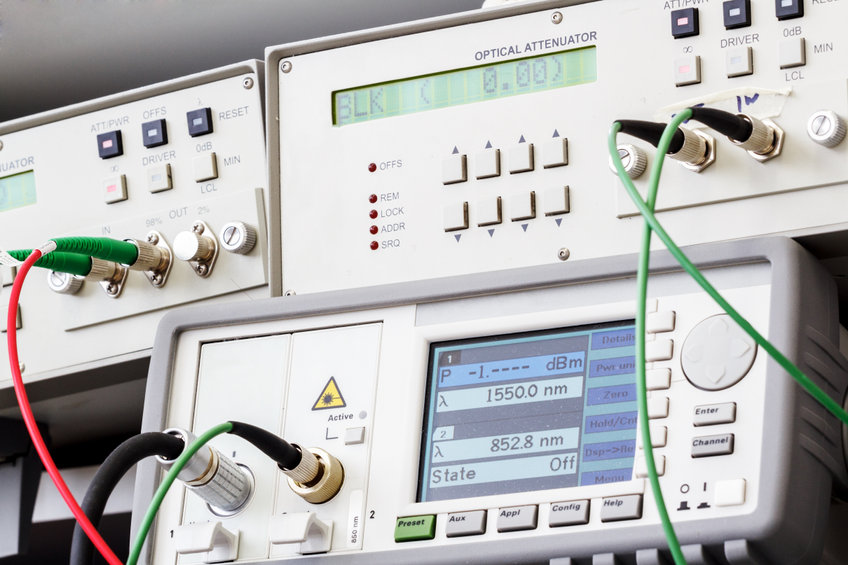Professionals work with optical fibre testing equipment to maintain efficient data transmission.
Professionals work with optical fibre testing equipment to maintain efficient data transmission.
Blog Article
Exploring the Perks of Optical Fibre Testing for Enhanced Communication Systems
The significance of optical fiber screening in modern communication systems can not be overemphasized, as it offers as a foundation for guaranteeing network reliability and performance. This proactive screening strategy has extensive ramifications for signal top quality and operational performance, increasing the inquiry of exactly how these practices add to lasting sustainability in an ever-evolving technical landscape.
Value of Optical Fiber Screening
The value of optical fibre screening can not be overstated in today's data-driven atmosphere. As companies increasingly count on high-speed information transmission for everyday operations, the stability and performance of optical fiber networks are paramount. Examining makes sure that these networks can support the vast quantities of data generated and sent seamlessly, cultivating efficient interaction and connection.
Optical fiber screening serves numerous crucial features, including verifying installment quality, recognizing potential faults, and figuring out overall system performance. Routine testing can prevent pricey downtimes and service disturbances, enabling organizations to preserve operational continuity. Furthermore, it aids in conformity with industry criteria and laws, making sure that fiber optic setups fulfill called for specifications for safety and security and reliability.
Additionally, testing can enhance the longevity of fiber optic systems. By proactively determining problems such as signal loss, attenuation, or adapter failures, organizations can attend to troubles before they escalate, hence prolonging the life of their facilities. In recap, optical fibre testing is not simply a technical need yet a critical investment that enhances network integrity, optimizes efficiency, and ultimately supports the development and performance of modern communication systems.
Key Evaluating Methods

OTDR is a crucial method used to determine faults, measure splice losses, and evaluate the total integrity of a fiber optic web link. By sending out a pulse of light down the fibre and evaluating the mirrored light, professionals can determine places of faults and review the network's performance over lengthy ranges.
Insertion loss screening measures the amount of signal loss that occurs when light go through a link or splice. This method is vital for verifying that connections meet specific loss limits, which is important for preserving ideal performance in communication systems.
Optical return loss screening quantifies the quantity of light mirrored back towards the source as a result of blemishes in the fibre or connections. High return loss values suggest much better efficiency and decreased signal deterioration.
With each other, these testing techniques supply a thorough analysis of fibre optic networks, guaranteeing their reliability and functionality in diverse communication applications.
Effect on System Performance
Effective optical fibre screening directly affects the overall efficiency of interaction systems. By ensuring the stability of fibre optic wires, testing determines potential faults such as attenuation, splice loss, and port imbalance. These concerns can dramatically break down signal high quality, causing interruptions and lowered data transmission rates.

Additionally, routine optical fibre screening adds to long-term system sustainability. It makes it possible for early detection of deterioration, permitting prompt maintenance and upgrades prior to significant failings happen. This not only extends the life expectancy of the facilities however likewise makes certain that interaction systems remain affordable in regards to performance.
Cost-Effectiveness and Effectiveness
Cost-effectiveness is a crucial consideration in the deployment and upkeep of optical fibre networks. Executing robust optical fiber testing procedures can significantly lower functional expenses by determining issues before they escalate right into major issues. optical fibre testing equipment. By discovering faults, attenuation, and other efficiency hindrances early, organizations can prevent costly repairs and downtime, which can interfere with services and cause revenue loss
Furthermore, efficient testing methodologies simplify the setup procedure, permitting technicians to work a lot more properly. This converts to reduce work costs and faster project completion times. Advanced testing tools, such as Optical Time Domain Name Reflectometers (OTDRs), enables a specific evaluation of fibre high quality, guaranteeing that only ideal products are used, thereby lessening waste.
Normal testing additionally adds to much better source allotment. By recognizing the network's efficiency, anchor organizations can make informed choices regarding upgrades and developments, ensuring that investments are made where they are most required. In recap, optical fiber testing improves cost-effectiveness and effectiveness, sustaining the lasting sustainability and competitiveness of communication systems in a progressively demanding market.
Guaranteeing Long-Term Reliability
Executing extensive optical fibre testing not only boosts cost savings and operational effectiveness however additionally plays an essential role in guaranteeing the lasting dependability of communication networks. Regular screening techniques, including attenuation and transmission capacity assessments, help determine possible deterioration in fibre efficiency before it leads to solution interruptions.
By utilizing advanced screening techniques, network operators can identify mistakes or weaknesses in the fiber framework, enabling timely removal. This proactive technique reduces downtime, try this out guaranteeing that communication systems stay useful and efficient. Additionally, normal testing adds to the development of a much more durable network, as drivers can adjust and maximize their infrastructure based upon real-time information insights. fibre testing equipment.
Furthermore, making certain conformity with sector criteria via optical fiber screening strengthens the quality and integrity of the whole interaction system. This adherence not just bolsters self-confidence among stakeholders however also straightens with regulative demands, which are progressively rigid.
Final Thought
Finally, optical fiber screening serves as a basic element in improving communication systems. By using various testing approaches, such as OTDR and insertion loss evaluations, networks can attain optimum performance and integrity. The aggressive recognition of mistakes not only enhances signal quality however additionally reduces downtime, eventually contributing to cost-effectiveness and functional efficiency. Additionally, adherence to market criteria promotes stakeholder self-confidence, ensuring the long-lasting sustainability of communication frameworks in an increasingly data-driven landscape.
Report this page